PA 586 - ANATOMY GI (powerpoint 1 and powerpoint 4; completed)
1/91
There's no tags or description
Looks like no tags are added yet.
Name | Mastery | Learn | Test | Matching | Spaced |
|---|
No study sessions yet.
92 Terms
True or False - The parietal and visceral peritoneum are mucous membranes
FALSE; they are serous membranes.
Mesothelium is made up of what type of epithelial cells?
simple squamous epithelial cells; serous peritoneum membrane (a continuous membrane that includes both the parietal and visceral peritoneum) is mesothelium
true or false- the peritoneum (both parietal and visceral) is continuous and highly convoluted
true; convoluted means twisted or coiled
what is the mesentery? (What does it have in it?)
Double layer of peritoneum (parietal and visceral) enclosing organ; attaching to abdominal wall. Has thin layer of loose CT between layers
Have BV, lymphatics, lymph nodes, nerves, fat
mesogastrium surrounds
the stomach
transverse mesocolon surrounds… and the sigmoid mesocolon surrounds
transverse colon and sigmoid colon
what surrounds the small intestine?
the mesentery
… provides neurovascular communication between the abdominal wall and abdominal organs
the peritoneum (mesentery/mesogastrium/mesocolon)
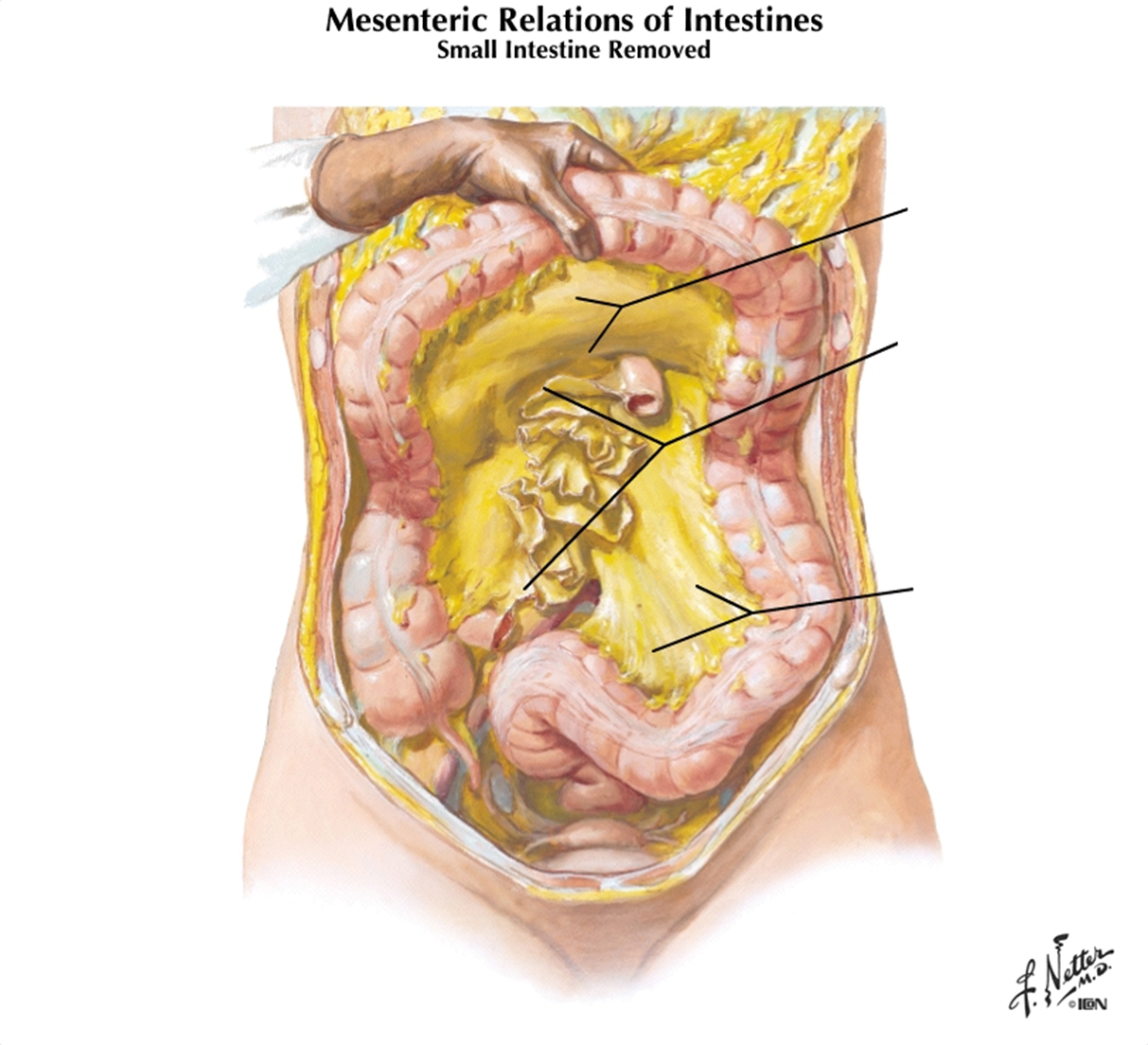
what structure is the double sheet of peritoneum from stomach and duodenum to adjacent organs
omentum (there are two- greater and lesser)
“omentum” means apron
What is the position of the greater omentum?
Hangs off greater curvature of stomach and transverse colon
what is known as the “policeman of the abdomen” and why?
greater omentum, because it can move to wall off infections
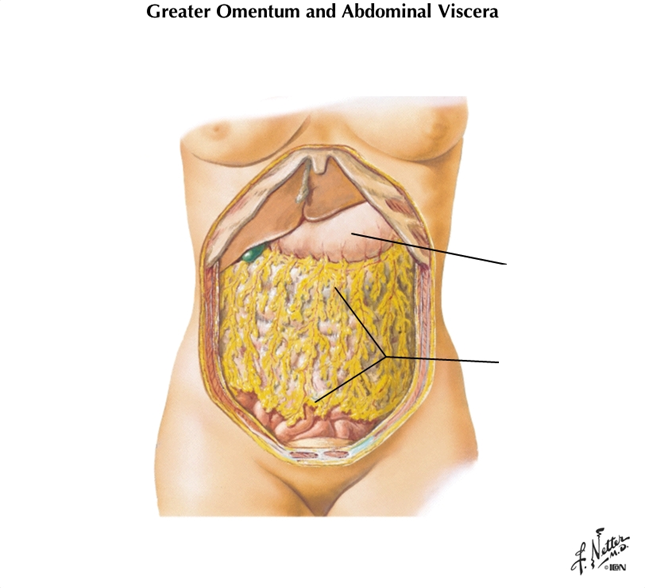
what structure attaches to lesser curvature of stomach and proximal duodenum to liver?
lesser omentum
T or F - omentum is peritoneum
true
what two ligaments make up the lesser omentum? Which one contains the portal triad?
hepatoduodenal ligament and hepatogastric ligament
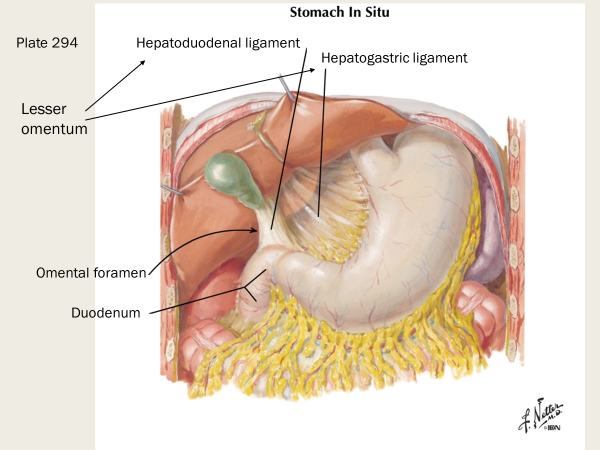
The hepatoduodenal ligament contains the portal triad
true or false - The Peritoneal ligament consists of double layer of peritoneum that connects an organ with an organ or to abdominal wall
true
What is the omental bursa?
A sac-like cavity between stomach/lesser omentum and posterior abdominal wall
the omental bursa is a sac-like cavity between the ________ and posterior abdominal wall
stomach (or lesser omentum)
what is the purpose of the omental bursa? What is one clinical significance of this site?
allows free movement of stomach on posterior structures, and communicates with peritoneal cavity through omental foramen
This is an area where an infection can persist

What is the opening posterior to free edge of hepatoduodenal ligament?
omental (epiploic) foramen
what are the boundaries of the omental foramen? (Ant, Post, Sup, and Inf)
Ant: hepatoduodenal ligament containing the portal triad (hepatic portal v, proper hepatic a, common bile duct)
Post: IVC; R crus of diaphragm
Sup: Caudate lobe of liver
Inf: first part of duodenum and portal triad
True or False - the posterior surface of retroperitoneal organs are covered in peritoneum
False; it is the anterior surface of retroperitoneal organs that are covered in peritoneum
Name 6 retroperitoneal organs
Duodenum
Ascending/descending colon
Pancreas
Kidneys, suprarenal (adrenal glands)
Ureters
Aorta and Inferior vena cava
true or false - the parietal peritoneum is supplied by the same somatic nerves as the region of wall that it lines
true; For this reason it is sensitive to pressure, pain, heat, cold, laceration
is the esophagus posterior or anterior to the trachea?
the esophagus is located posteriorly to the trachea
are the c-shaped rings of the trachea positioned posteriorly or anteriorly?
anteriorly
Put these layers of the digestive system in order from internal to external:
muscularis externa
mucosa
serosa
lumen
submucosa
Lumen (technically this isn’t a layer; this is actually just an open space through which material passes through the digestive tract)
Mucosa
Submucosa
Muscularis externa
Serosa
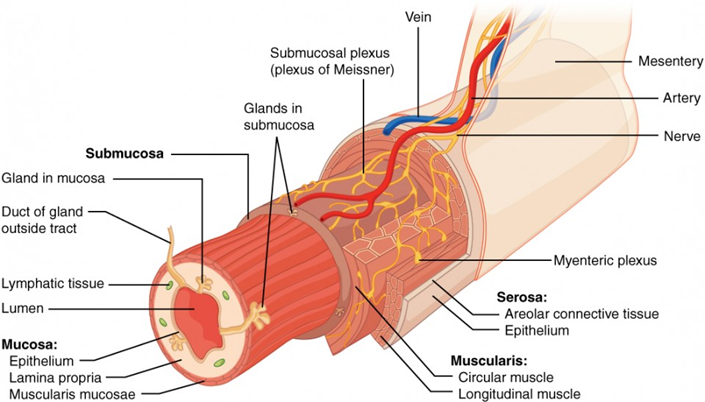
what are the three sublayers of mucosa
epithelium, lamina propria, and muscularis mucosa
what type of epithelial cells make up the mucosa?
mostly simple columnar with goblet cells
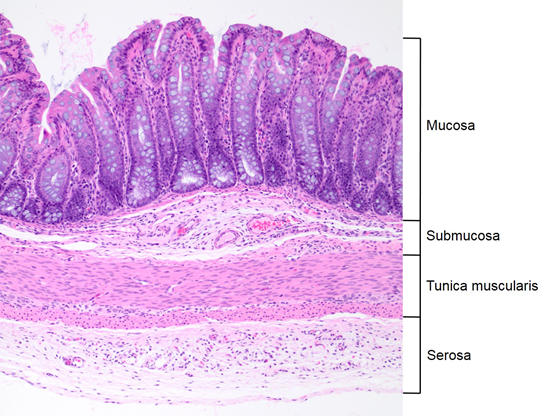
what is the lamina propria?
sublayer of mucosa made up of loose CT (either areolar or reticular)
mucosa-associated lymphatic tissue are here
where is MALT located?
in the lamina propria of mucosa
what are the layers of the muscularis externa?
inncer circular layer and outer longitudinal layer of smooth muscle
the serosa is made up of ____ CT covered with ______
Areolar CT covered with mesothelium (simple squamous epithelium
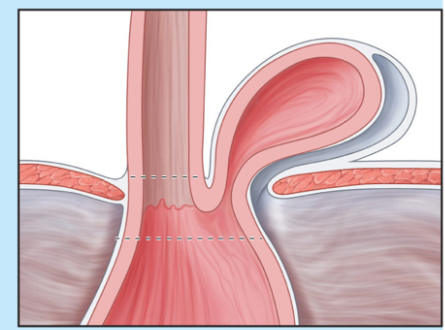
what is pictured here?
hiatal hernia
tinea coli
longitudinal bands of smooth muscle that run the length of the colon
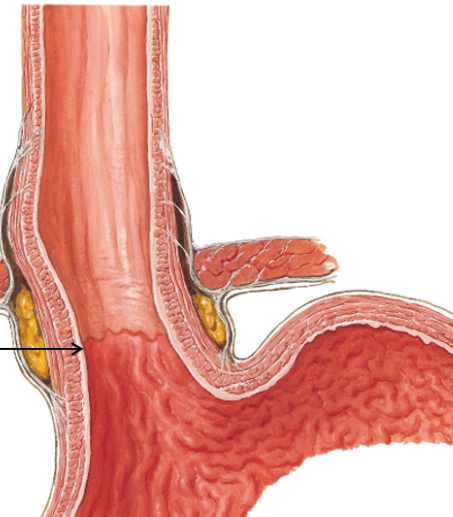
what is this?
esophagogastric junction
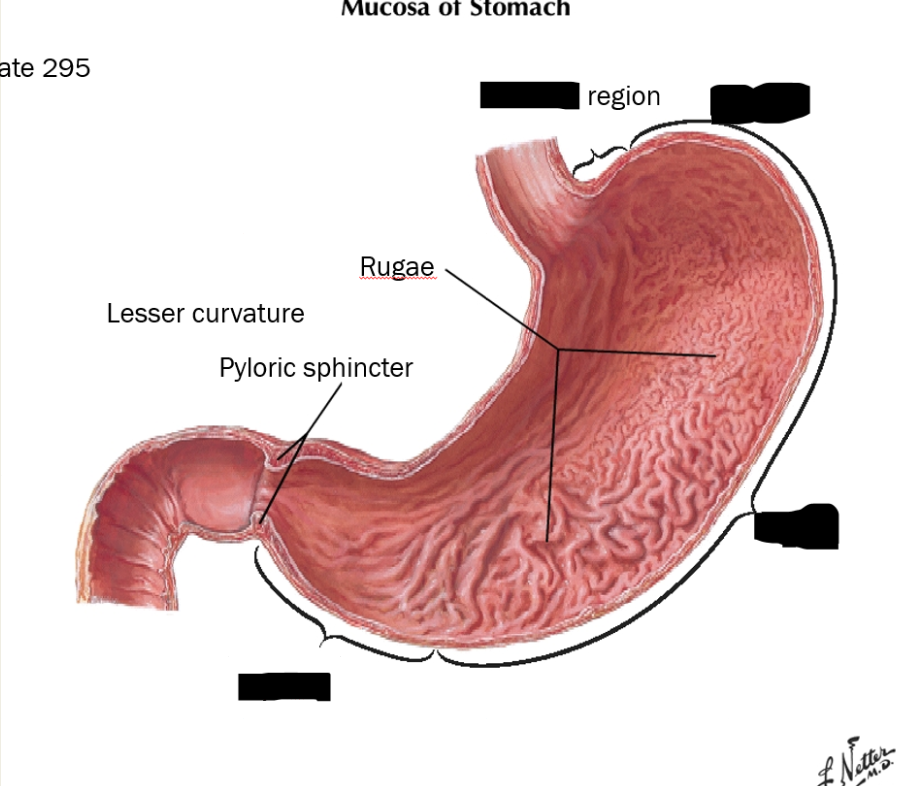
label these structures
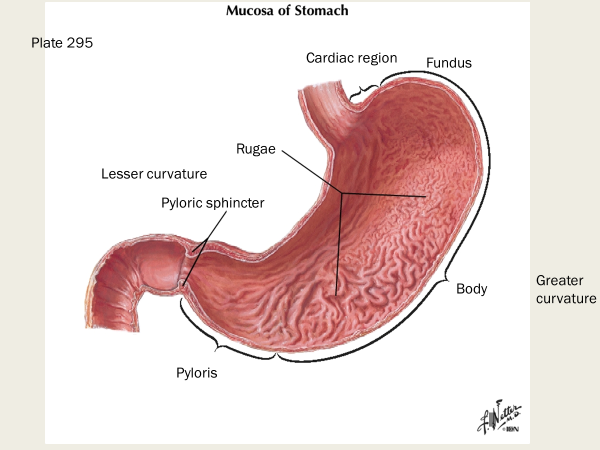
T or F - pyloric stenosis is more common in AMAB than AFAB
true; affects about 1:150 male infants vs only 1:750 female infants
what are the three sections of the small intestine, where most digestion occurs?
duodenum, jejunum, ileum
what is the region of alkaline hydrolysis, absorption, and transport
small intestine
label
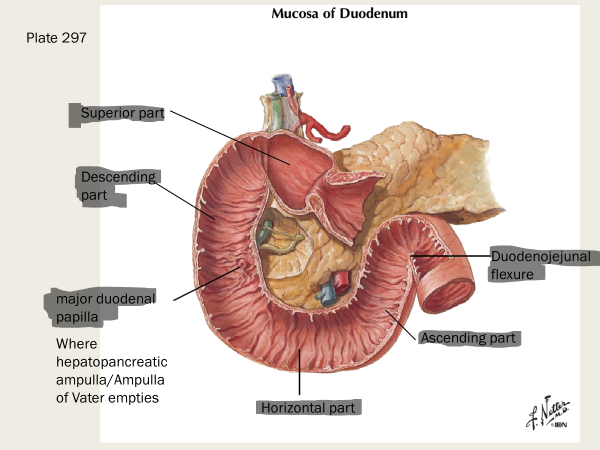
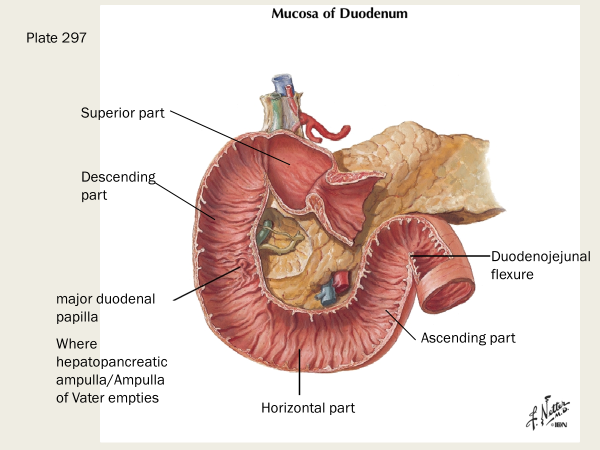
the sigmoid colon is a ____peritoneal organ
sigmoid colon is intra-peritoneal
what does the suspensory muscle of the duodenum do? (AKA ligament of Treitz)
supports boundary of duodenum into jejunum; it’s a skeletal m from diaphragm and fibromuscular band of smooth m from duodenum
a band of tissue in the abdomen that anchors the duodenum and helps move food through the gastrointestinal tract
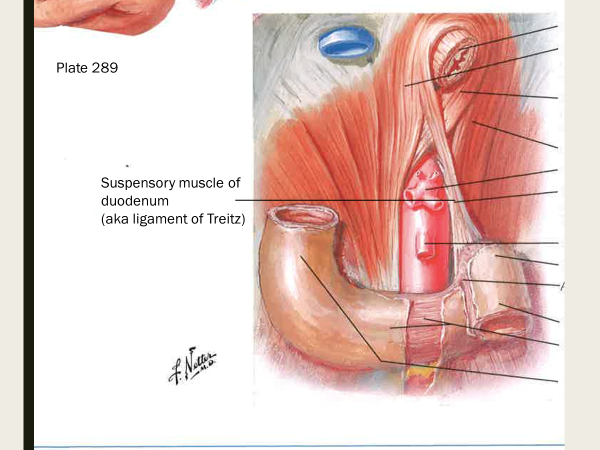
what is the vascular supply for the jejunum?
long straight aa (vasa recta), and single tier of arcades (branches of superior mesenteric artery)
the jejunum makes up ___% of the intraperitoneal section of small intestine
~40%
the ileum makes up about __% of the intraperitoneal section of the small intestine
~60%
what is the vascular supply for the ileum? (add more to this)
several tiers of arcades, short straight aa
I left off on powerpoint 1, slide 55
haustrum
the haustra of the colon (singular haustrum) are the small pouches caused by sacculation, which give the colon its segmented appearance
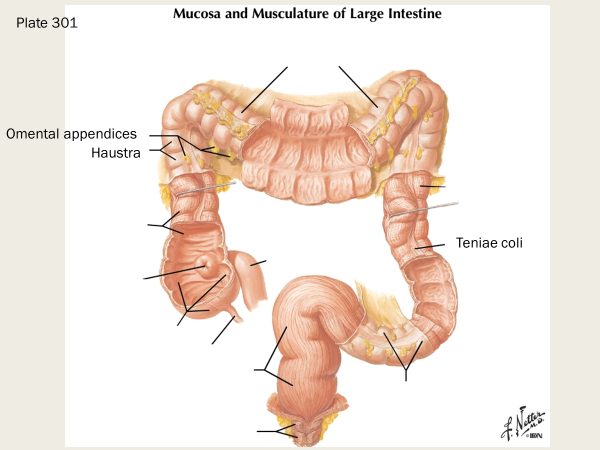
omental appendices
small, fat-filled pouches of the peritoneum that are attached to the large intestine
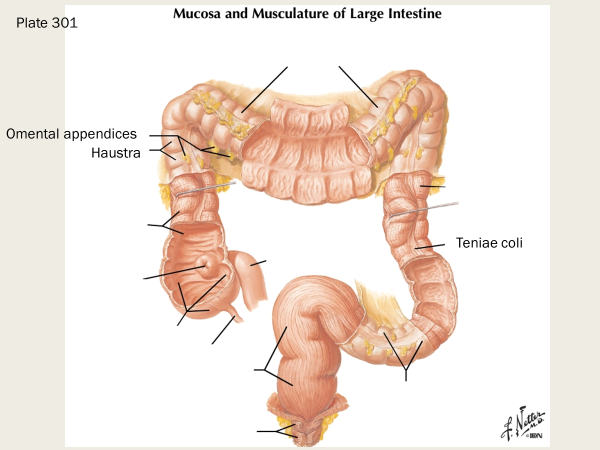
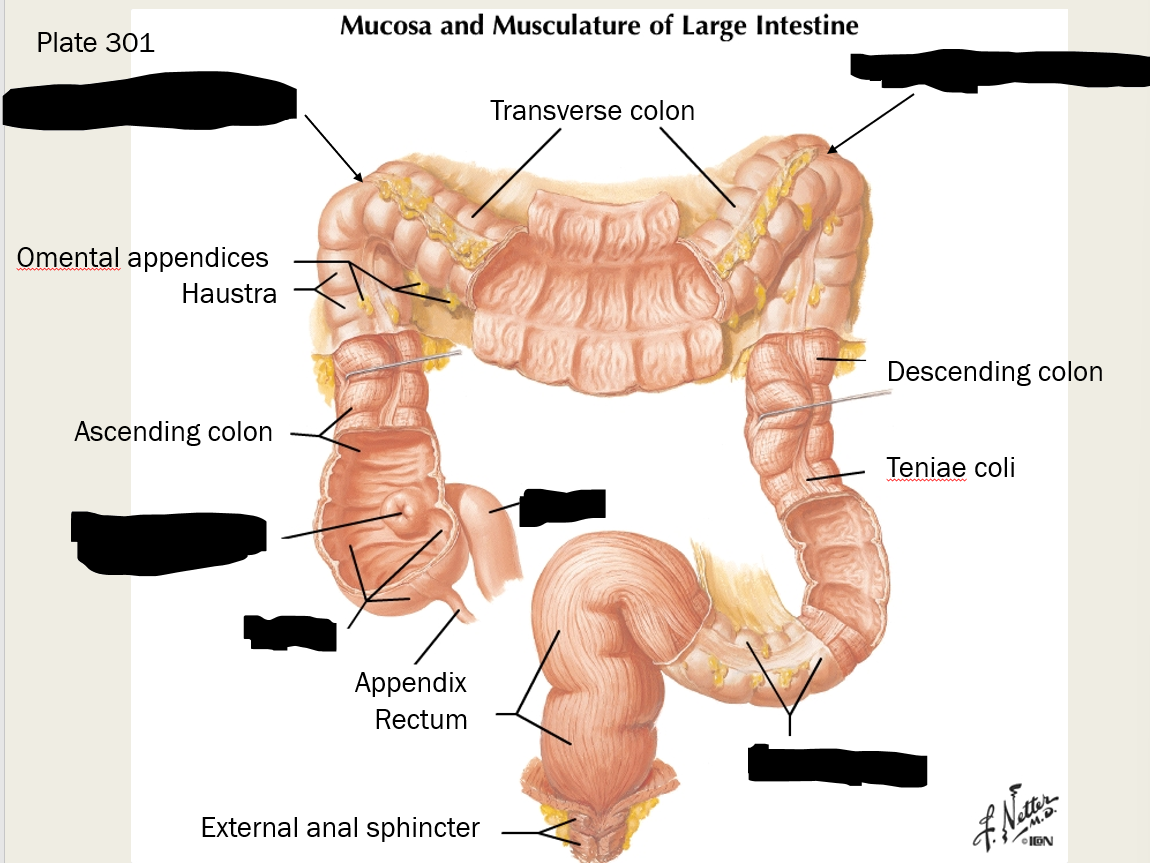
label these structures
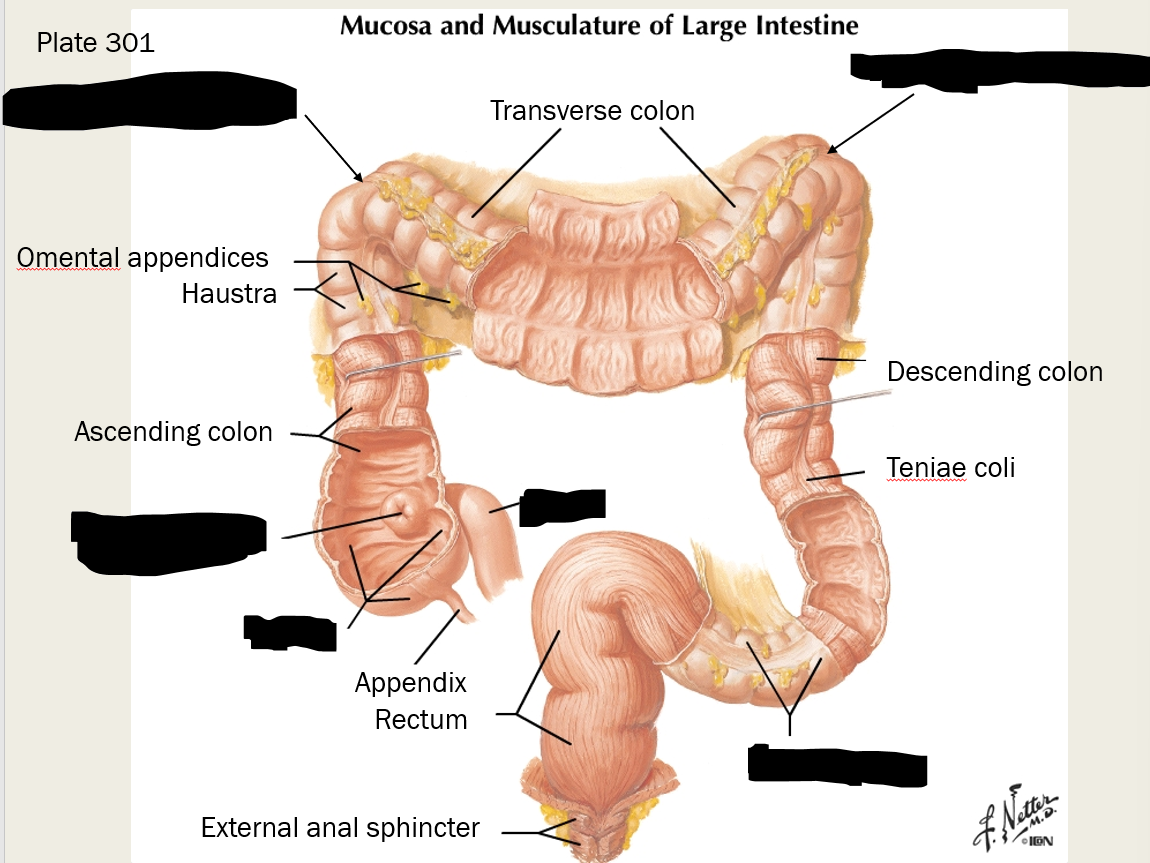
what are diverticula?
envaginations/out-pocketings of mucosa of colon; subject to infection and rupture
diverticulosis
disorder with development of diverticula
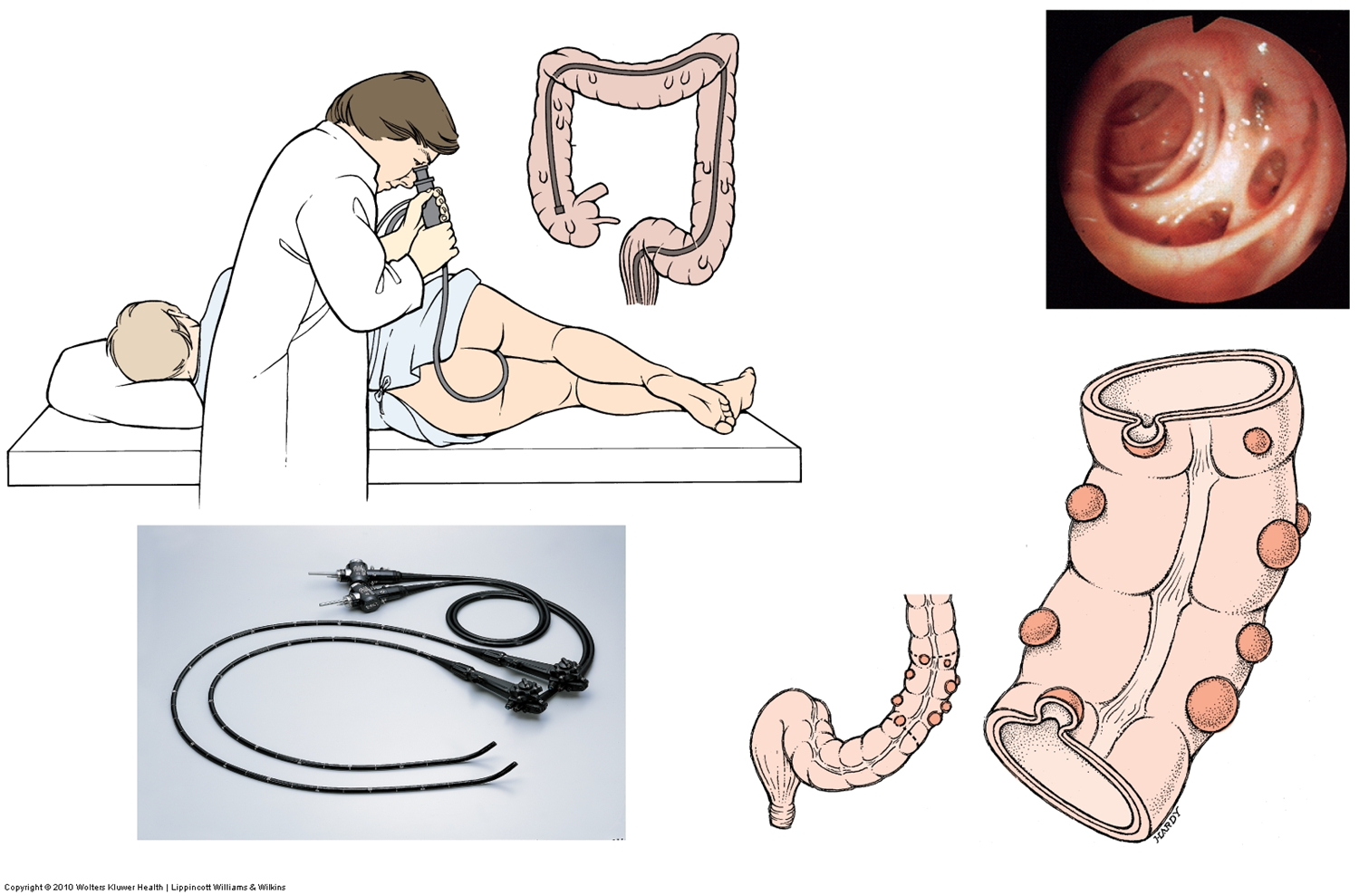
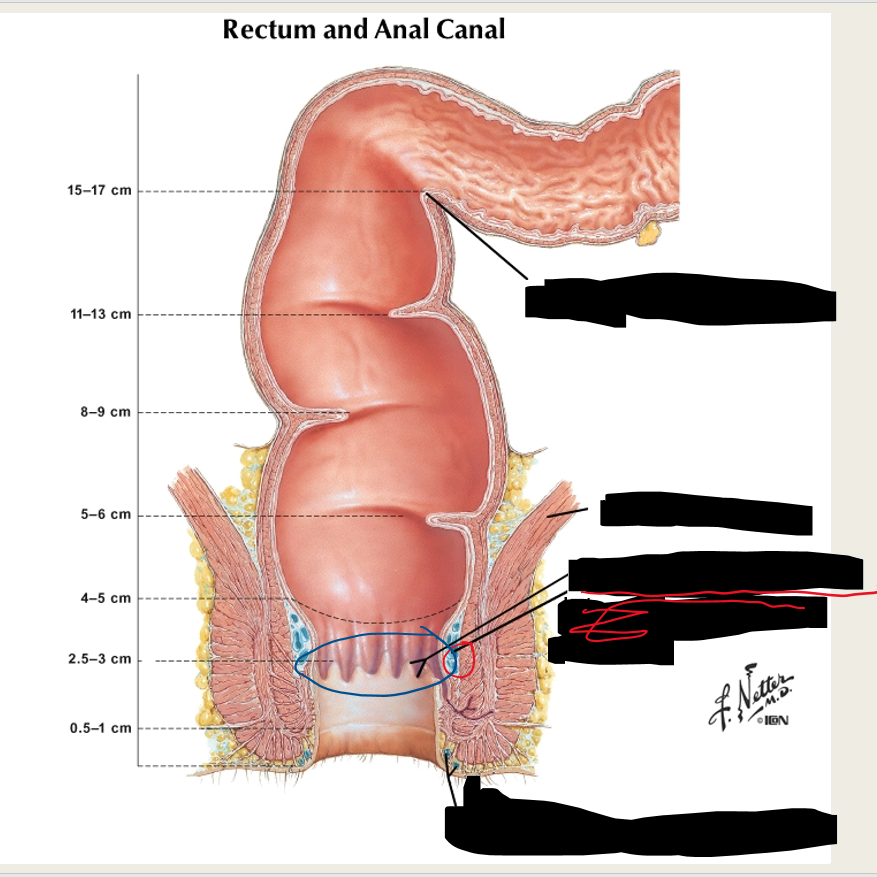
label this
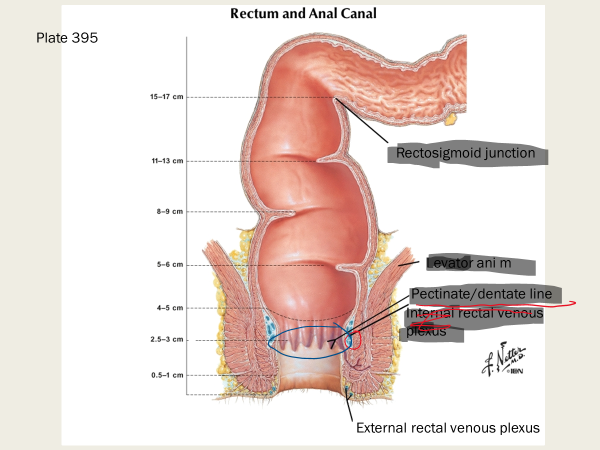
what is the artery, venous return, and innervation of the rectum above the pectinate line?

what is the arterial supply, venous return, and innervation of the rectum below the pectinate line?

the IVC splits into the …
common iliac veins
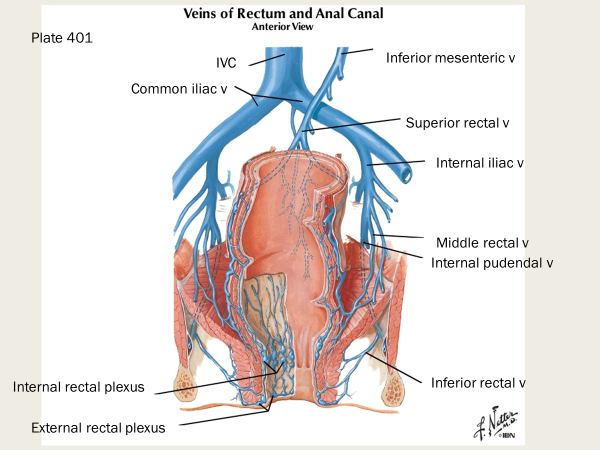
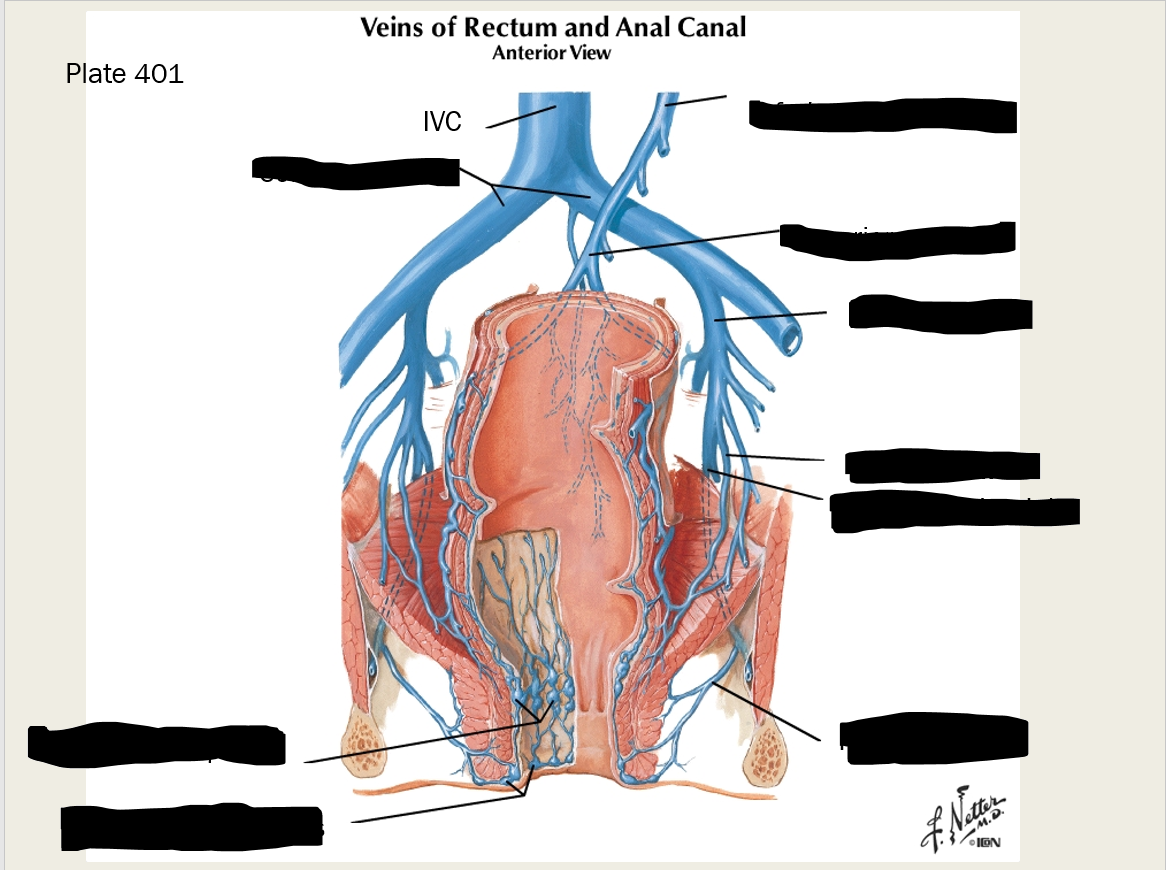
label these

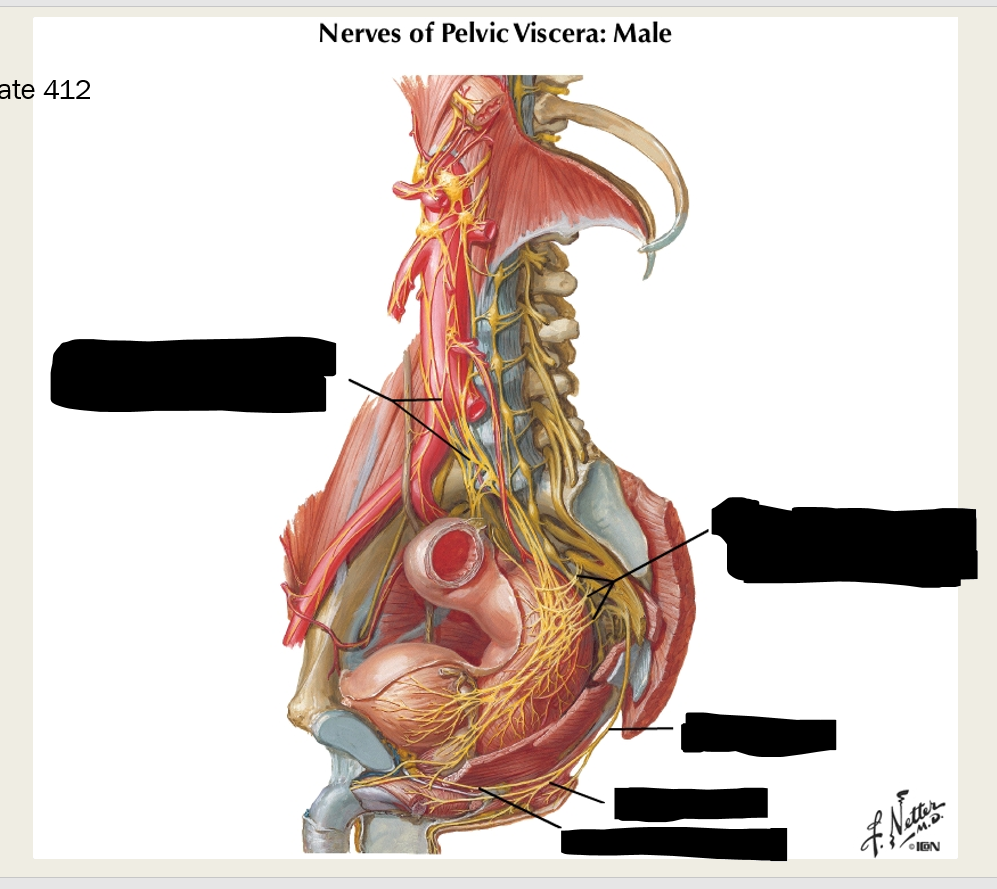
label these five nerves of the pelvic viscera
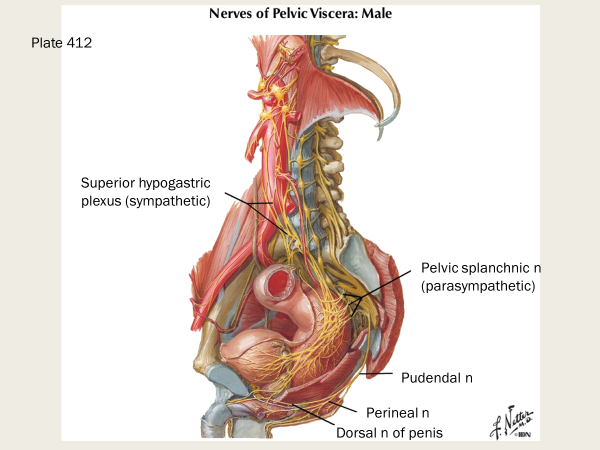
true or false - the pelvic splanchnic nerve provides sympathetic innervation to the pelvic viscera
false; the pelvic splanchnic nerve provides parasympathetic innervation to the pelvic viscera
true or false - the superior hypogastric plexus supplies sympathetic innervation to the pelvic viscera
true
the primordial gut is comprised of… (3 things)
foregut, midgut, hindgut
derivatives of the primordial foregut include:
Foregut
Esophagus, stomach, duodenum, pancreas, liver, gallbladder
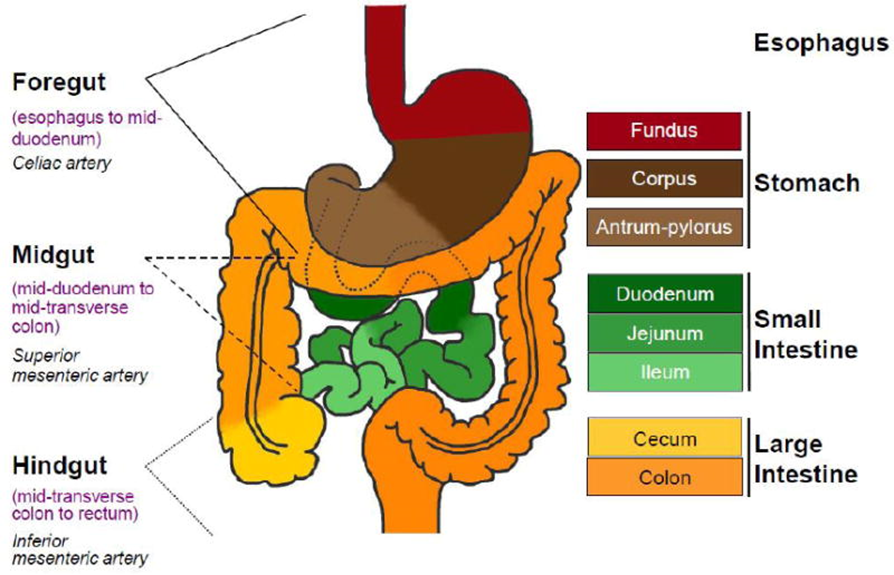
derivatives of the primordial midgut include:
Midgut
Small intestine, cecum, appendix, ascending colon, most of transverse colon
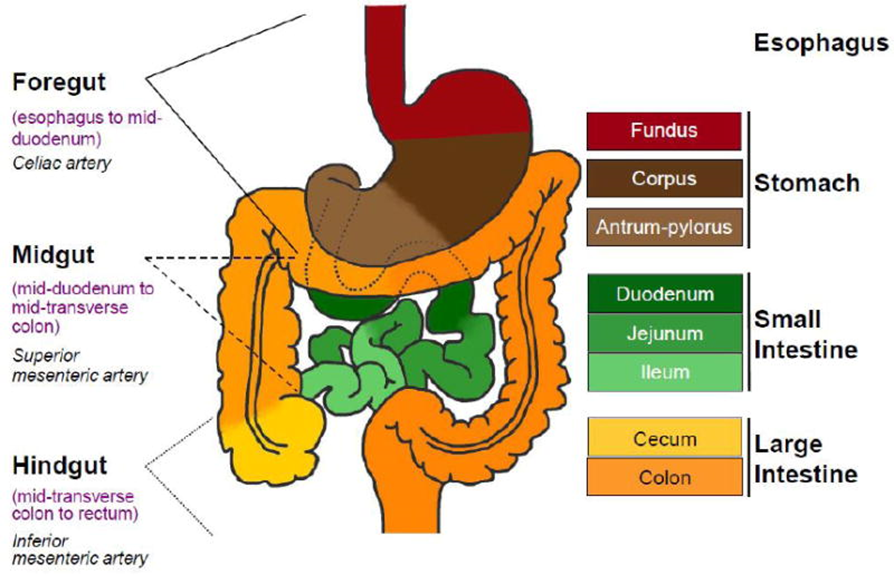
the distal part of the transverse colon, descending colon, sigmoid colon, and rectum are derived from what part of the primordial gut?
hindgut

pain in epigastric region is associated with the…
pain in midgut associated with…
and pain in hindgut associated with…
foregut, epigastric, midgut, peri-umbilical, and hindgut- hypogastric
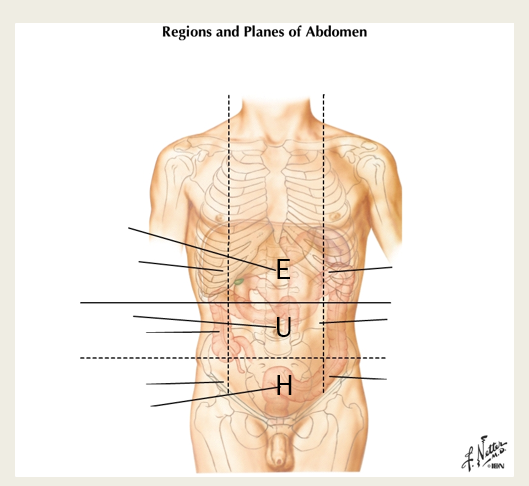
put these layers of the abdomen in order from most superficial to most deep:
extraperitoneal fat, muscles, skin, subcutaneous tissue, deep fascia, parietal peritoneum, transversalis fascia
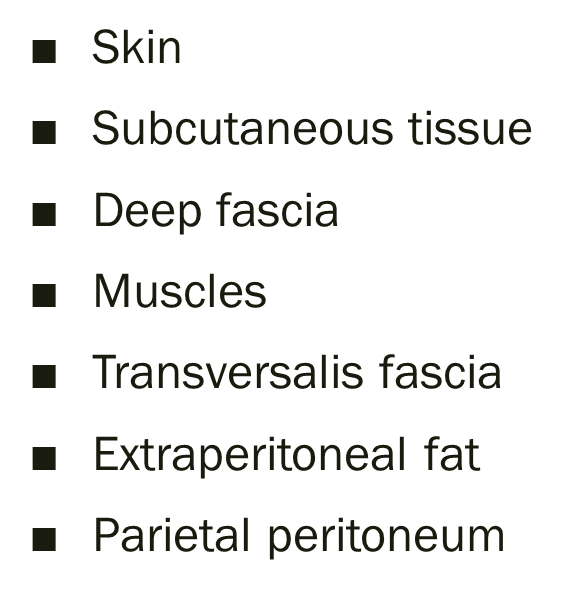
ABOVE THE ARCUATE LINE: which of these splits to form the anterior and posterior rectus sheath, which together wrap around the rectus abdominus muscle:
a. IO aponeurosis
b. TA aponeurosis
c. linea alba
d. EO aponeurosis
IO aponeurosis splits to form the anterior rectus sheath and posterior rectus sheath
True or False - there is no posterior rectus sheath below the arcuate line
true
what is the arcuate line?
crescent shaped line that delineates bottom free edge of posterior rectus sheath

where is the transtubercular line?
iliac tubercles and body of L5 vertebra
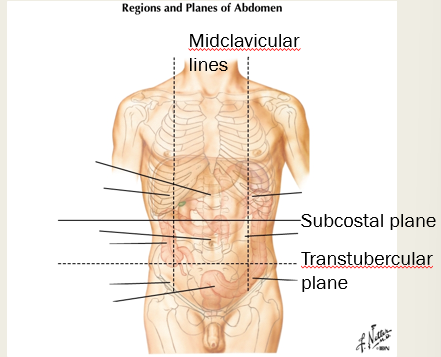
where is the subcostal plane?
inferior border of 10th costal cartilages
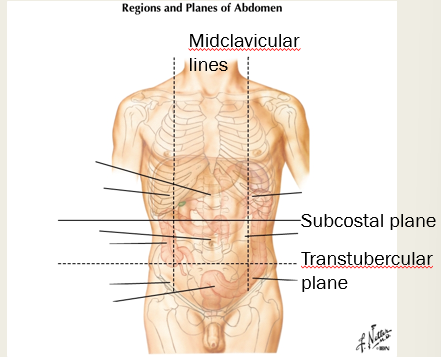
point out on your body the following areas:
right and left hypochondriac
left and right lumbar regions
umbilical region
epigastric region
hypogastric region
right and left inguinal region
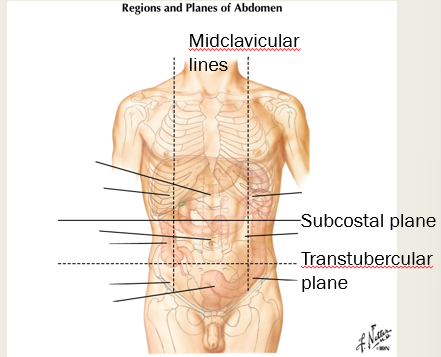
what is the rectus sheath?
a fibrous compartment in the abdomen that contains the rectus abdominis and pyramidalis muscles
formed by aponeuroses of anterior abdominal wall mm
what is the linea alba?
thin band of CT that runs down the abdomen, midline
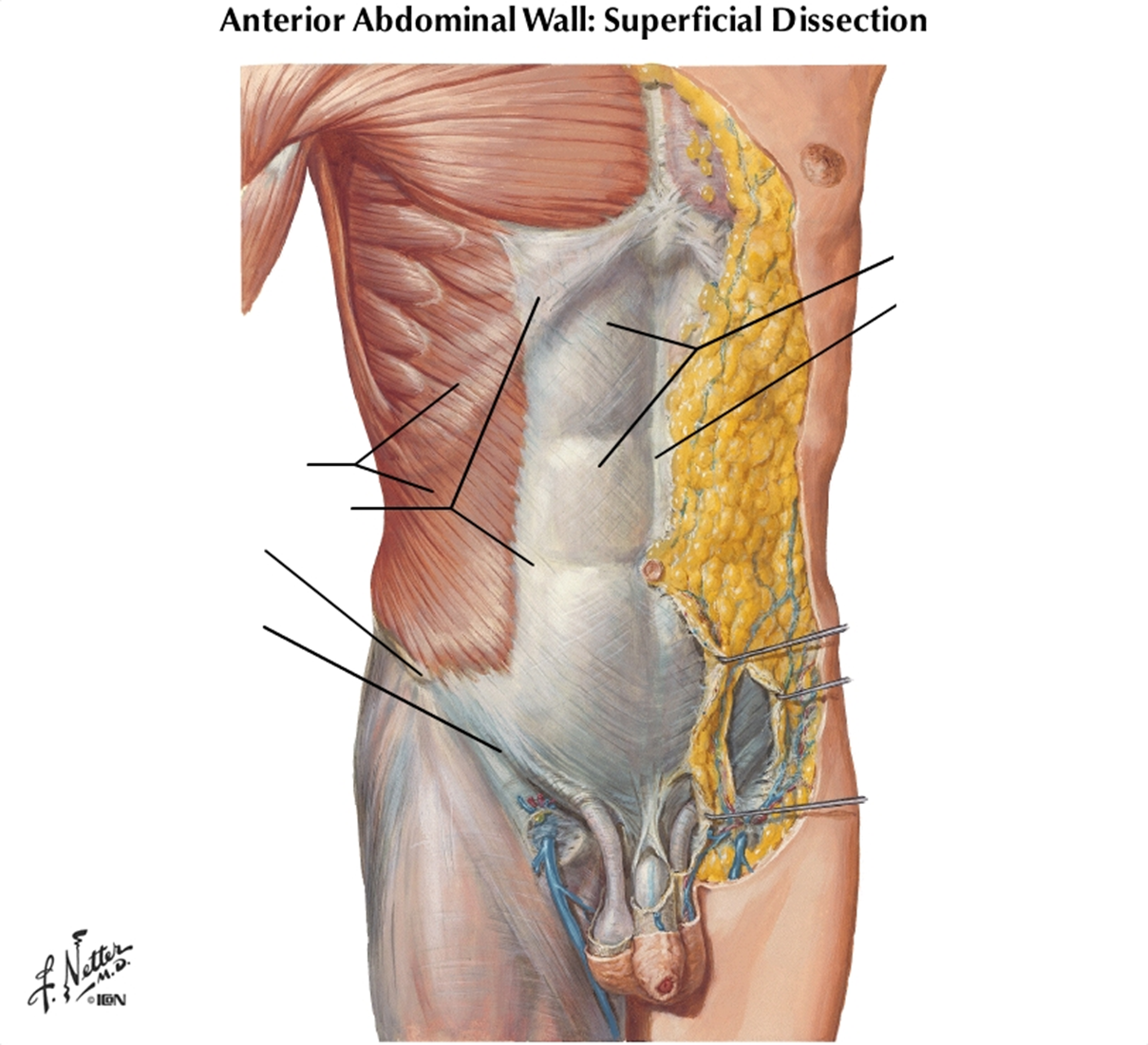
which one of these statements is true?
a. the EO+ TA aponeuroses join to form the anterior rectus sheath
b. the IO + TA aponeuroses join to form the posterior rectus sheath
c. the EO + IO + TA aponeuroses join for form the posterior rectus sheath
d. The EO+ TA aponeuroses join to form the posterior rectus sheath
b. the IO + TA aponeuroses join to form the posterior rectus sheath
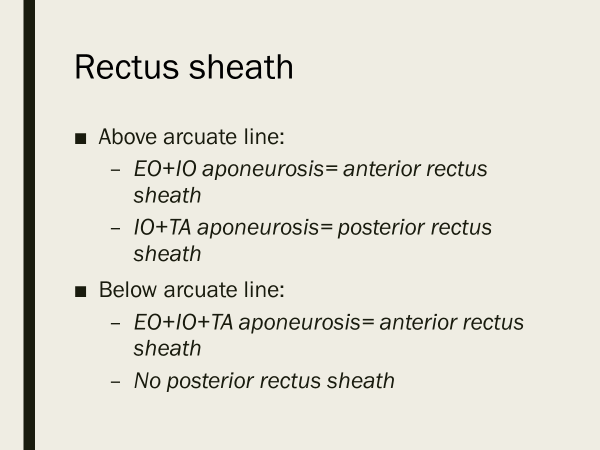
subclavian a -> ___________________ -> musculophrenic a
internal thoracic artery
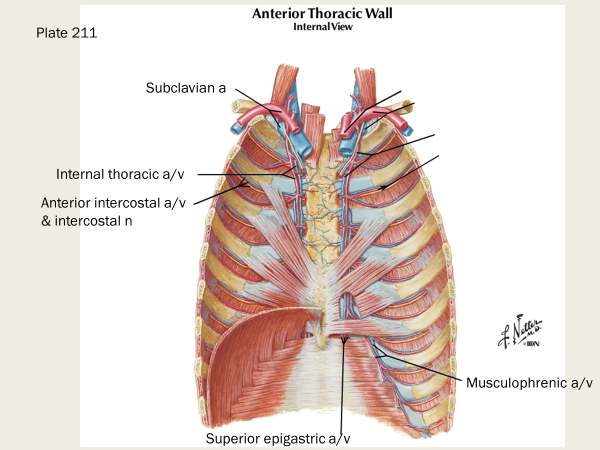
subclavian a -> internal thoracic a -> superior ____________ a
superior epigastric artery
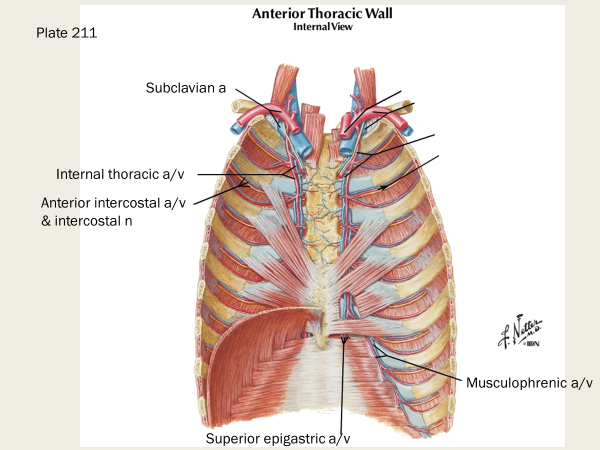
the superior epigastric artery branches from the ________ thoracic artery and the inferior epigastric a branches from the _________ ___________ artery, just superior to the inguinal ligament
Superior epigastric a from internal thoracic a
Inferior epigastric a from external iliac a just superior to inguinal ligament
Thoracoabdominal nn come from the ventral rami of T__-__
Thoracoabdominal nn: T7-T11ventral rami
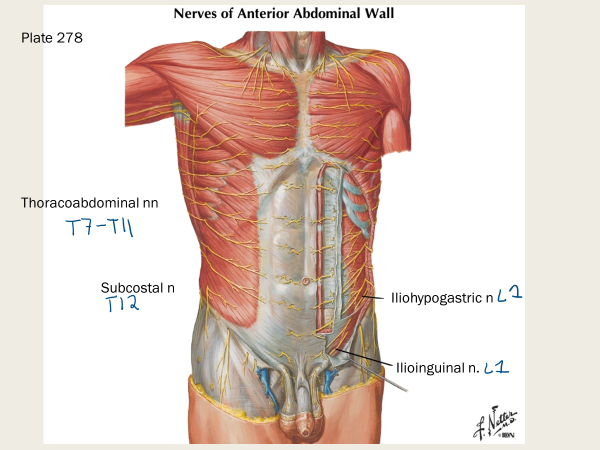
subcostal n comes from T__ ventral ramus
T12

what ventral ramus do the iliohypogastric and ilioinguinal nn come from?
L1 ventral ramus
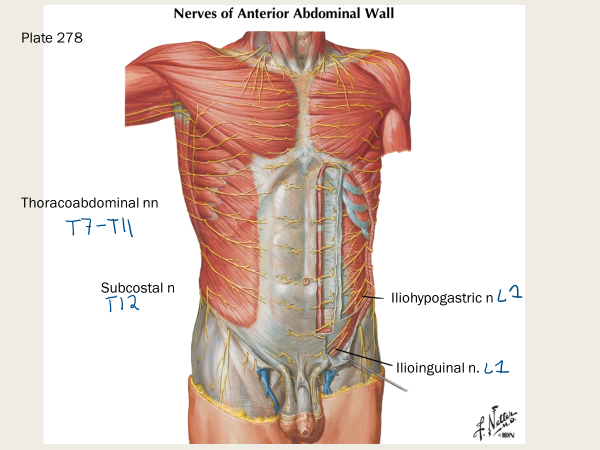
The inguinal ligament is the inferior most part of the _____ _____ aponeurosis, and is attached to the ASIS and the pubic _____
external oblique aponeurosis; attached to pubic tubercle
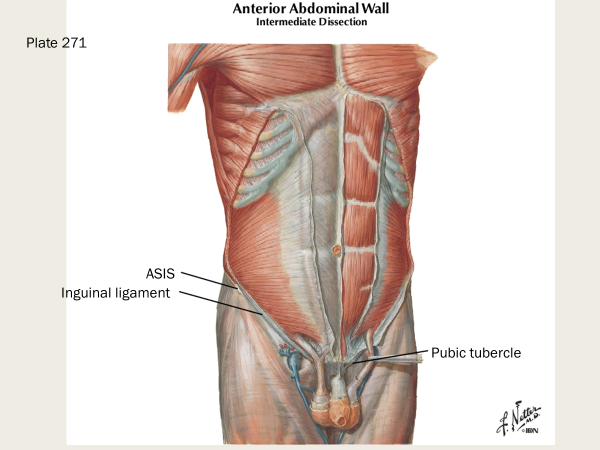
what are the contents of the inguinal canal?
spermatic cord or round ligament of uterus
what is cryptorchidism?
undescended testes
The anterior wall of the inguinal canal is bordered by the…
The posterior wall is bordered by the…
The roof is bordered by the … and … fibers
and the floor is bordered by the … ligament
Anterior wall: external oblique aponeurosis
Posterior wall: transversalis fascia
Roof: IO and TA fibers
Floor: inguinal ligament

Where is the superficial inguinal ring located (in what aponeurosis) and where is the deep inguinal ring located?
superficial inguinal ring is located in the External oblique aponeurosis (superior and lateral to pubic tubercle), and the deep inguinal ring is located in the transversalis fascia (which is deeper) and inferior to the epigastric artery

what is the clinical significance of Hesselbach’s triangle?
Where is it located?
What type of inguinal hernia (direct or indirect) passes through this?
it’s weaker (no muscle fibers) and hernias may occur here
posterolateral to superficial inguinal ring
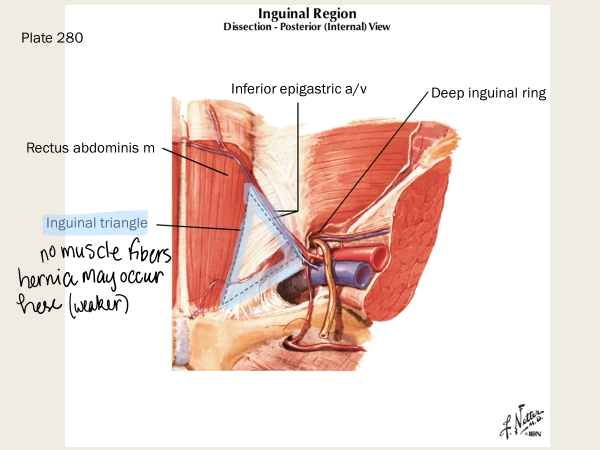
direct hernias pass directly through the inguinal triangle
what is more common, indirect or direct inguinal hernias?
indirect hernias are more common
what is the “indirect” pathway that indirect inguinal hernias travel through the abdominal wall?
deep inguinal ring → inguinal canal → superficial inguinal ring → scrotum
True or False - A direct inguinal hernia begins lateral to the inferior epigastric BV
FALSE: direct hernias pass medial to inferior epigastric BV, and the indirect hernias begin lateral to the inferior epigastric BV
True or False - an indirect inguinal hernia begins lateral to the inferior epigastric BV
TRUE
Where are the following organs located in relation to the Psoas major m?
kidneys
ureters
pancreas
cecum/appendix
sigmoid colon
lumbar plexus
abdominal aorta/IVC
gonadal artery
Kidneys: Posterior to the psoas major muscle.
Ureters: Anterior and slightly medial to the psoas major muscle.
Pancreas: Posterior to the psoas major muscle.
Cecum/Appendix: Anterior to the psoas major muscle (right lower quadrant).
Sigmoid Colon: Anterior and medial to the psoas major muscle (left lower quadrant).
Lumbar Plexus: Lies within the psoas major muscle (branches emerge from the muscle).
Abdominal Aorta/IVC: Anterior to the psoas major muscle.
Gonadal Artery: Arises from the abdominal aorta, anterior and medial to the psoas major muscle.